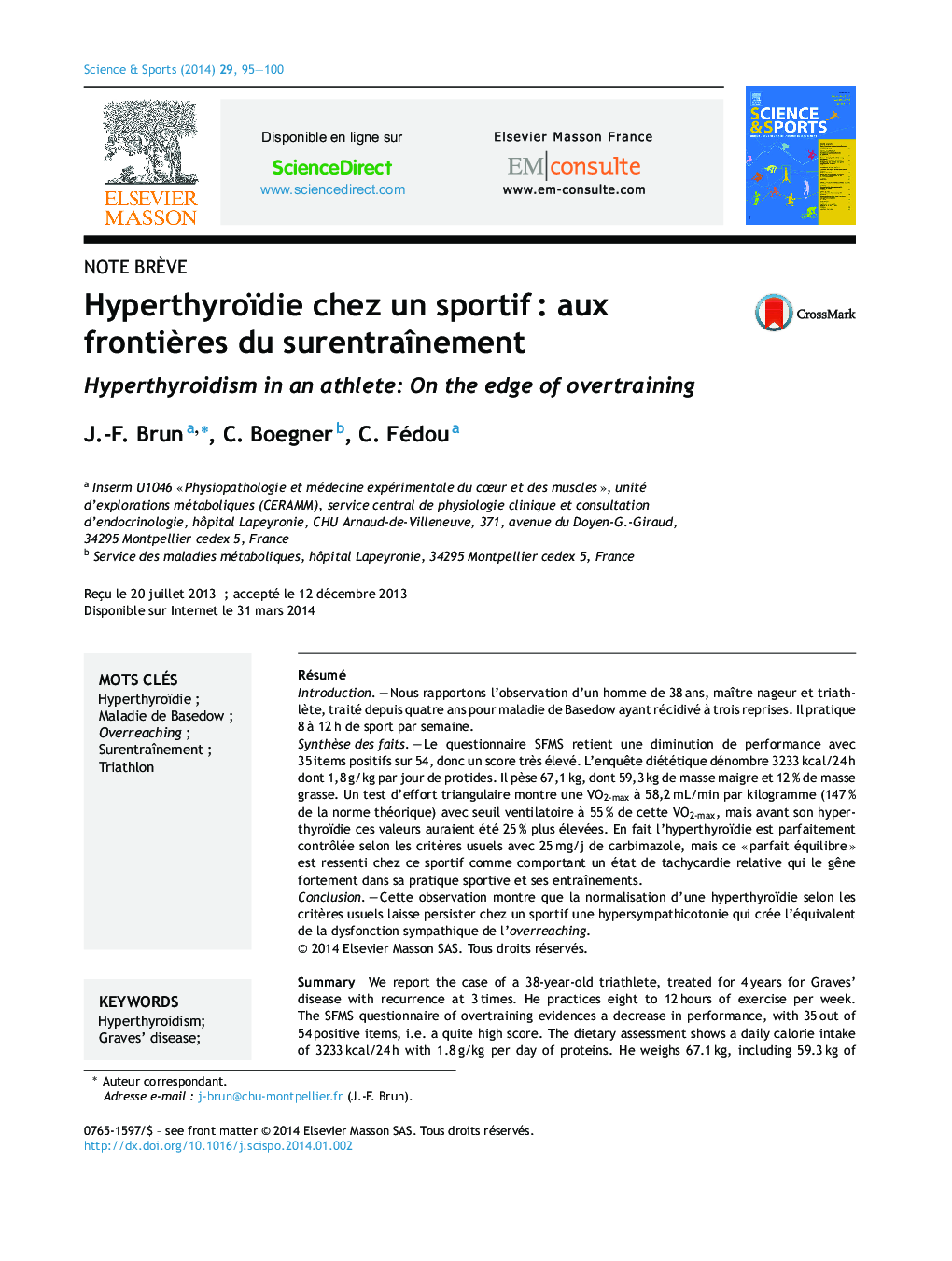| Article ID | Journal | Published Year | Pages | File Type |
|---|---|---|---|---|
| 4093055 | Science & Sports | 2014 | 6 Pages |
RésuméIntroductionNous rapportons l’observation d’un homme de 38 ans, maître nageur et triathlète, traité depuis quatre ans pour maladie de Basedow ayant récidivé à trois reprises. Il pratique 8 à 12 h de sport par semaine.Synthèse des faitsLe questionnaire SFMS retient une diminution de performance avec 35 items positifs sur 54, donc un score très élevé. L’enquête diététique dénombre 3233 kcal/24 h dont 1,8 g/kg par jour de protides. Il pèse 67,1 kg, dont 59,3 kg de masse maigre et 12 % de masse grasse. Un test d’effort triangulaire montre une VO2-max à 58,2 mL/min par kilogramme (147 % de la norme théorique) avec seuil ventilatoire à 55 % de cette VO2-max, mais avant son hyperthyroïdie ces valeurs auraient été 25 % plus élevées. En fait l’hyperthyroïdie est parfaitement contrôlée selon les critères usuels avec 25 mg/j de carbimazole, mais ce « parfait équilibre » est ressenti chez ce sportif comme comportant un état de tachycardie relative qui le gêne fortement dans sa pratique sportive et ses entraînements.ConclusionCette observation montre que la normalisation d’une hyperthyroïdie selon les critères usuels laisse persister chez un sportif une hypersympathicotonie qui crée l’équivalent de la dysfonction sympathique de l’overreaching.
SummaryWe report the case of a 38-year-old triathlete, treated for 4 years for Graves’ disease with recurrence at 3 times. He practices eight to 12 hours of exercise per week. The SFMS questionnaire of overtraining evidences a decrease in performance, with 35 out of 54 positive items, i.e. a quite high score. The dietary assessment shows a daily calorie intake of 3233 kcal/24 h with 1.8 g/kg per day of proteins. He weighs 67.1 kg, including 59.3 kg of fat-free mass and 12% body fat. An exercise test shows a value of VO2-max at 58.2 mL/min per kilogram (147% of the value predicted by Wasserman's formulae) with a ventilatory threshold at 55% of VO2-max, but before hyperthyroidism occurred these values were 25% higher. In fact hyperthyroidism is correctly controlled according to usual criteria with 25 mg/d of carbimazole, but this “satisfactory control” is perceived in the case of this athlete as a situation of tachycardia and relative discomfort that impairs his practice of sport. This case report shows that the standard treatment of hyperthyroidism in an athlete may fail to avoid some degree of hypersympathicotonia, which creates the equivalent of the autonomic dysfunction of overreaching.
